


Currently, all the prints are ‘collagraphs’. The name comes from the Greek words ‘koll’ or ‘kola’, which means glue, and ‘graph’, meaning ‘to draw’.
Unique Prints and Artists Proofs
Unique Prints: When one of my prints is marked as a Unique Print (U/P), it is a unique original. Indeed, many of my printing plates are printed only once, with many printed less than ten times. Even in instances where a plate is used to make more than one print, the print is never a copy, as the plate is inked by hand individually each time, resulting in colour and tone variations between the impressions. Other factors influencing the deterioration and/or movement of materials on the plate between impressions, resulting in visible differences between prints made from the same plate.
Artists Proofs: These are a limited number of prints (marked A/P), usually created as a final check before a limited and numbered edition of prints is produced. However, in my case, I do not subsequently produce an edition. As a result of the nature of my printing plates, these are non-identical prints.
Making prints and printing
To date, most of my printing plates have been made using 1.5mm birch plywood, sourced from online suppliers. Textures are built up on the surface of the board using various materials – household filler, plastic fruit bags/netting, plastic washers, twigs, carborundum powder (the same stuff that glass paper is made with) etc. Almost anything can be used, provided that the surface is not raised by more than about 2mm, as the plate must pass under a printing press roller under heavy pressure.
The surface is then sealed using varnishes, to prevent ink from penetrating the surface and oozing out everywhere on the printing press. This isn’t pretty and must be avoided!
Plates are then printed on a specialist etching press, where the pressure applied to the plate and paper, via the rollers, can be carefully controlled. To date, I have been using quality printmaking papers including Somerset by St Cuthberts Mill and Fabriano.
There is always surprise (and sometimes disappointment) and delight in printing a plate. Although I have a good idea of how a plate may print, it is impossible to know exactly how a plate/paper/pressure combination will behave. I have learnt to be more patient and accept that mistakes and ‘good accidents’ may occur. Also, with the kind of plates that I make, sometimes the plate looks amazing, but prints poorly. This is usually because I did not seal the surface adequately or because there were insufficient differences in tone to register on the print. I try to learn from these mistakes for the next plate of that kind.
The Ropewalk
Most of the works have been printed at The Ropewalk, a gallery and arts centre in Barton-upon-Humber, North Lincolnshire, under the expert guidance and encouragement of artist and printmaker Tim Needham. A warm and huge thank you is extended to Tim and the Ropewalk, for their support and enthusiasm for my work and for supporting printmaking and the wider arts scene within Lincolnshire and beyond.
